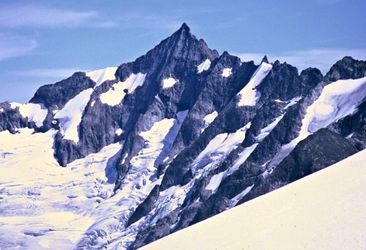Climbing Grand Teton

Grand Teton, located in the northwest region of the United States, presents a formidable challenge to experienced mountaineers. Standing proudly with a height of 13,775 feet (4,199 meters), this peak commands respect. Its sheer face and jagged ridges are not for the faint-hearted, and those seeking to summit should be prepared for a demanding climb. The mountain's steep granite faces and snow-covered slopes require technical skills and an understanding of alpine conditions. Weather can change rapidly, so being adept at assessing and navigating these shifts is crucial.
The difficulty of the ascent varies depending on the route chosen. The classic Owen-Spalding route offers a combination of rock scrambling and technical climbing, demanding proficiency in both. For those looking for a more challenging path, the Exum Ridge provides exhilarating exposure and breathtaking views, but it requires advanced climbing techniques and confidence in high-altitude environments. The mountain's conditions can be unpredictable, with potential for ice and snow even in summer, so preparation for mixed conditions is essential.
Two guides offer expeditions to Grand Teton, but many competent climbers choose to tackle the peak independently. As with any serious alpine endeavor, careful planning, respect for the mountain, and a deep understanding of one's own abilities are key to a successful and safe climb. Whether you choose to go guided or independent, the experience of summiting Grand Teton is an accomplishment that stays with you long after the descent.
Difficulty
- AD: Fairly hard (alpine grade 3)
These are pictures taken while climbing Grand Teton. They're shown here to give you an idea of what the route is like. You're welcome to share your own pictures of climbing Grand Teton, to help the community of climbers. Picture here are either uploaded by members (their own, or creative commons pictures), or guides.
Guide links
Grand Teton History
Climbing history of Grand Teton
The history of Grand Teton is deeply intertwined with the tales of courageous mountaineers and the rich cultural heritage of the indigenous people who inhabited the region. The Shoshone people, known as the "Sheep Eaters," were among the earliest inhabitants of the area, living in harmony with the rugged landscape for thousands of years.
In the realm of mountaineering, Grand Teton stands as a beacon for climbers seeking to conquer its formidable heights. The earliest recorded summit attempt occurred in 1872 by Nathaniel Langford and James Stevenson. Although their climb did not reach the summit, their efforts laid the groundwork for future expeditions. It wasn't until 1898 that William O. Owen, Franklin Spalding, Frank Petersen, and John Shive successfully reached the summit, marking a significant milestone in the history of American mountaineering.
The early 20th century saw increased interest in climbing Grand Teton, with mountaineers drawn to its challenging routes and breathtaking vistas. These early adventurers braved harsh weather conditions and limited technology, relying on their skill and determination to navigate the treacherous terrain. Their pioneering spirit continues to inspire climbers to this day, making Grand Teton a legendary destination in the world of mountaineering.
These climbs are similar in length, difficulty, and elevation. Offering a similar level of challenge as the Grand Teton climb.




